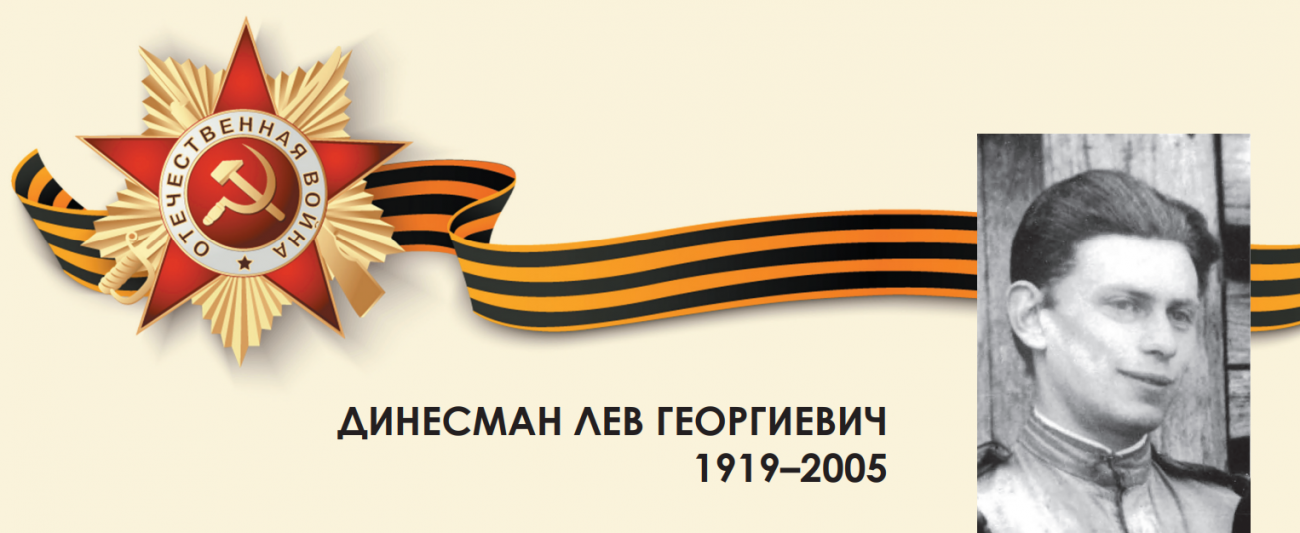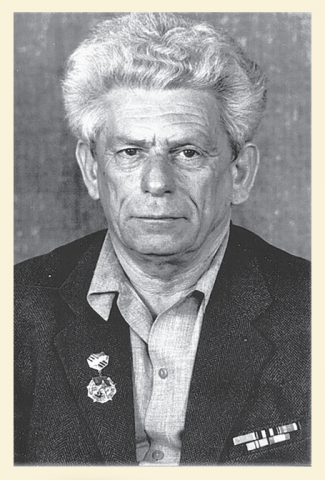
We continue telling the stories of the employees of the IEE RAS who participated in the Great Patriotic War.
In 1938, Lev Georgievich Dinesman entered the biology department of Moscow State University. In 1941, he volunteered for the front. Having experience in expeditionary work, good physical training and being fluent in German, Lev Georgievich was sent to a sabotage and reconnaissance unit. At first, he fought in the Karelo-Finnish and Southwestern directions, and his ability to navigate came in handy more than once in front-line conditions.
Thus, in 1941, during an enemy tank attack, his skills in assessing the passability of marshy terrain allowed him to take up defense in the only narrow area suitable for tanks and destroy two German tanks with Molotov cocktails, for which he was awarded two Orders of the Red Star. The observation skills of a naturalist and knowledge of the habits of wild animals also helped him out many times during the war.
In 1943, he was shell-shocked and received a shrapnel wound to the back, which also led to speech impairment. After being wounded, he continued to serve in the sanitary and epidemiological laboratory of the Voronezh and 1st Ukrainian Fronts, holding the positions of instructor-bonifier and instructor-deratizer. His duties included conducting epidemiological reconnaissance on enemy territory before the start of the Soviet offensive.
He fought in Western Ukraine, Poland, Hungary, Germany, Czechoslovakia and Austria. He was awarded the medals "For Military Merit" and "For Victory over Germany". He held the rank of senior sergeant by the end of the war. Returning from the hospital to the front via Moscow after being wounded, Lev Georgievich transferred from the full-time daytime department of the biology department of Moscow State University to the correspondence department in order to continue his studies during his service. After demobilization in the fall of 1945, he resumed his studies at Moscow State University.

After the war, Lev Georgievich worked mainly in the steppe of Kazakhstan under the supervision of Alexander Nikolaevich Formozov on the topic of "Amphibians and reptiles of the Turgai canyon country and the Northern Aral Sea region." This became the basis of his diploma work, and then his PhD dissertation, defended in 1950.
After graduating from Moscow State University and working there for a year, in 1949, Lev Georgievich transferred to the newly organized Complex Expedition on Protective Afforestation under the Presidium of the USSR Academy of Sciences, as part of the scientific support for the so-called "Stalin's plan for the transformation of nature."
The main research took place at the Dzhanybek station established in 1950 and concerned, first of all, the zoology of vertebrates in connection with protective afforestation.
In-depth study of the history of ecosystems led to the formation of a group for the history of biogeocenoses under the leadership of L.G. Dinesman in April 1965 within the framework of the Laboratory of Biogeocenology at the Botanical Institute of the USSR Academy of Sciences, headed at that time by V.N. Sukachev.
In 1967, at the invitation of V.E. Sokolov, Lev Georgievich, together with the entire group, moved to work at the A.N. Severtsov Institute of Ecology and Evolution of the USSR Academy of Sciences, where by order of February 15, 1968, a group for the history of biogeocenoses was organized under his leadership.
